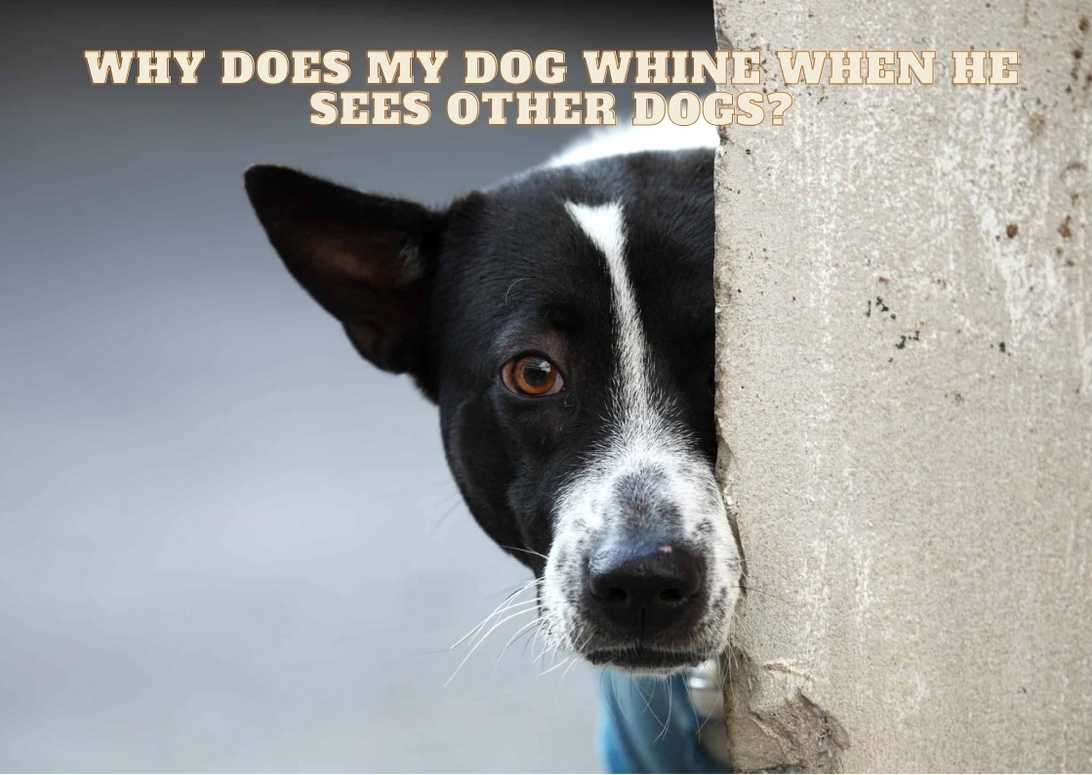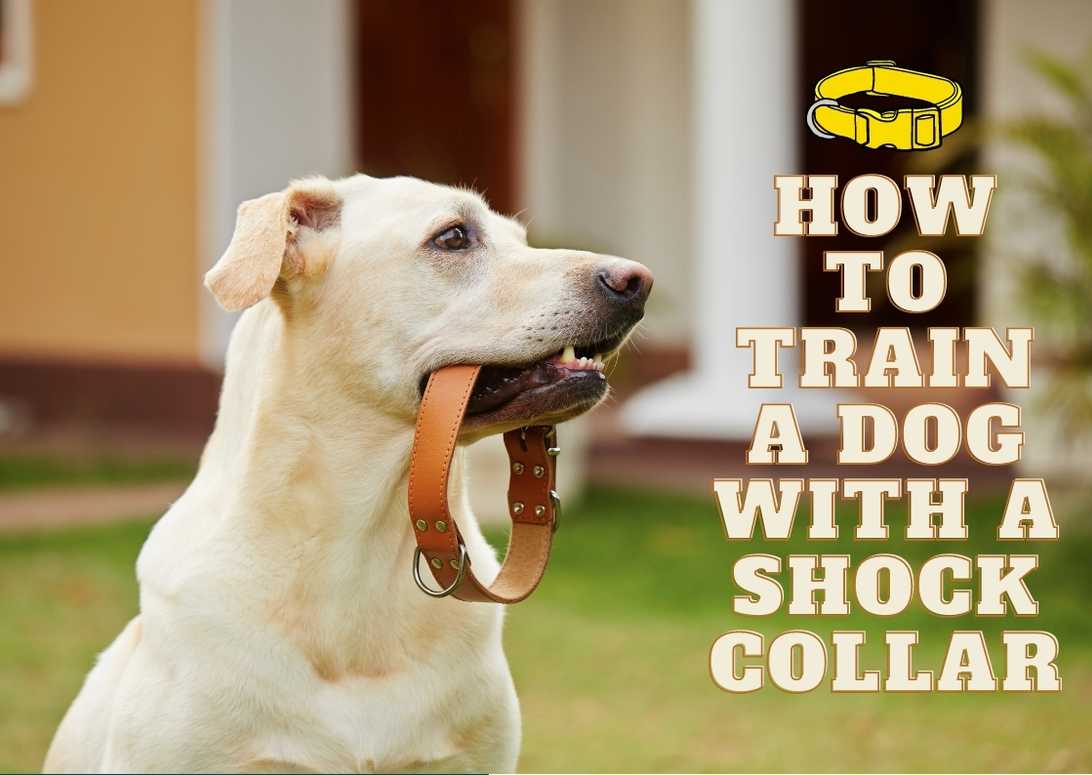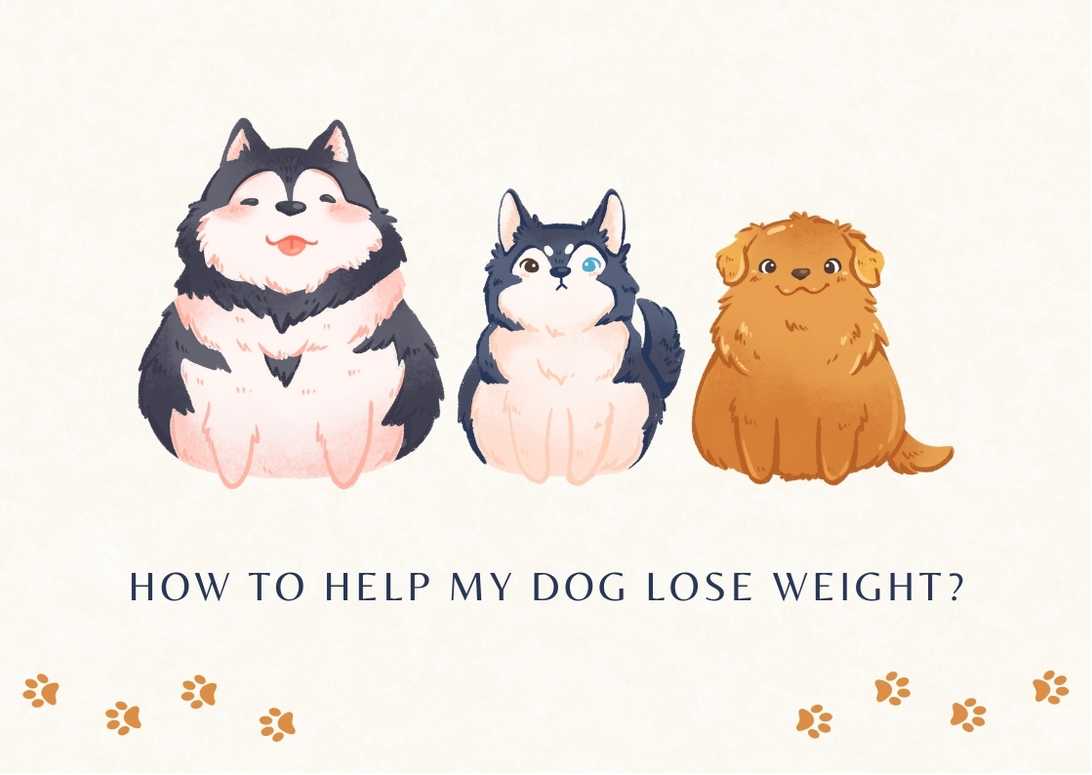Why Does My Dog Whine When He Sees Other Dogs?
As a dog owner, it can be quite perplexing when my furry friend starts whining uncontrollably at the sight of other dogs. It’s as if they have their own secret language that I’m yet to fully understand.
But fear not, because in this article, we will explore the fascinating world of canine behavior and delve into the reasons why our beloved pets whine when they encounter their furry counterparts.
There could be several possible explanations for this behavior, ranging from simple greetings to more complex emotions like frustration or anxiety. It’s important for us to uncover these underlying reasons in order to better understand our dogs and address any potential issues they may be experiencing.
So let’s dive into the world of dog communication and discover why our four-legged friends whine when they see other dogs.
Important Points
- Lack of proper socialization or previous negative experiences with other dogs can contribute to a dog whining when they see other dogs.
- Positive reinforcement training, such as treats, praise, and playtime, can help dogs associate positive experiences with encounters with other dogs.
- Gradual exposure to different social situations and other dogs can help build a dog’s confidence and reduce anxiety related to whining behavior.
- Consulting with a professional trainer or behaviorist can provide valuable guidance and insights in modifying a dog’s whining behavior around other dogs.
Possible Reasons
If you’ve ever wondered why your dog whines when he sees other dogs, it could be because he’s feeling a mix of emotions like frustration, anxiety, and even jealousy. Dogs are social animals, and they have their own ways of expressing themselves.
Some dogs may feel overwhelmed or insecure when they see other dogs, especially if they haven’t been properly socialized or if they’ve had negative experiences in the past. This can lead to whining as a way to communicate their discomfort or uneasiness.
Understanding your dog’s body language signals can help you identify the root cause of their whining behavior. Look for signs like tense body posture, raised hackles, or avoidance behavior when encountering other dogs. These signals indicate that your dog may be feeling fearful or threatened in these situations.
To address this issue, it’s important to employ proper training techniques and positive reinforcement strategies. Gradual exposure to other dogs through controlled socialization methods can help build your dog’s confidence and reduce their anxiety levels.
By identifying the behavioral triggers that cause your dog to whine around other dogs, you can work towards addressing and resolving their emotional reactions. It’s important to remember that every dog is unique and may require different approaches to help them overcome their anxieties.
With patience and consistency in training, you can help your furry friend become more comfortable around other dogs without resorting to excessive whining or distress.
Behavioral Triggers
When petting other dogs, it’s common for our furry friends to get a little whiny. Whining is a form of communication that dogs use to express their emotions, and it can be triggered by various factors. Understanding the behavioral triggers behind this whining can help us address the issue effectively.
Here are some possible reasons why your dog may whine when he sees other dogs:
- Body language: Dogs communicate through body language, and sometimes they may feel uneasy or anxious when encountering unfamiliar dogs. This discomfort can lead to whining as a way to express their nervousness.
- Socialization techniques: Proper socialization plays a crucial role in how dogs interact with others. If your dog hasn’t been exposed to different dogs or situations during his early development stages, he may feel overwhelmed and unsure around other dogs, leading to whining.
- Training methods: The way we train our dogs can also influence their behavior around other animals. If your dog hasn’t been taught how to properly greet and interact with fellow canines, he may resort to whining as an attempt to establish control or seek attention.
To address these behavioral triggers, positive reinforcement techniques can be highly effective. By rewarding your dog for calm and confident behavior around other dogs, you can gradually help him overcome his anxiety and reduce his tendency to whine. However, if the problem persists despite your efforts, seeking professional help from a certified dog trainer or behaviorist could provide valuable guidance. By understanding the underlying causes of your dog’s behavior and implementing appropriate training methods, we can work towards resolving this issue and creating a more harmonious environment for both our furry friend and ourselves.
Now let’s explore the possibility of jealousy as a factor contributing to your dog’s unusual behavior.
Jealousy Possibility
Addressing the possibility of jealousy, I can’t help but wonder if my furry companion’s whining when I pet other dogs is a result of feeling left out and insecure. Jealousy signs in dogs can manifest through behaviors like excessive barking, growling, or even aggression towards the perceived threat.
It is essential to manage jealousy in dogs to ensure their overall well-being and maintain harmonious relationships with other pets. One way to address this issue is through socialization techniques that expose your dog to different animals and situations gradually. By gradually increasing their exposure, you’re helping them become more comfortable and less likely to feel threatened by other dogs receiving attention.
Positive reinforcement is also crucial when managing jealousy in dogs. Rewarding your dog’s calm behavior around other dogs with treats or praise can reinforce positive associations and help them understand that good things come from being calm and composed in these situations. Another helpful technique is desensitization training, which involves exposing your dog to triggers like seeing you petting other dogs at a distance where they don’t react anxiously or start whining. Slowly decrease the distance over time while rewarding their calm behavior until they can tolerate being close to other dogs without displaying signs of jealousy.
Transitioning into the subsequent section about anxiety and frustration, it’s important to note that while jealousy may be one possible explanation for my dog’s whining when he sees other dogs, there could also be underlying anxiety or frustration causing this behavior. Understanding these additional factors will enable me to explore comprehensive strategies in addressing my beloved companion’s emotions effectively.
Anxiety and Frustration
To effectively address anxiety and frustration in your furry companion, it’s important to understand the underlying factors contributing to their whining behavior when interacting with other dogs.
Dogs can experience anxiety and frustration for various reasons, such as a lack of proper socialization or separation anxiety. By implementing appropriate dog training techniques and utilizing socialization techniques, you can help alleviate their anxiety in these situations.
One potential reason for your dog’s whining could be separation anxiety. This occurs when dogs become distressed when separated from their owners or other familiar individuals. To manage separation anxiety, gradually increase the amount of time your dog spends alone by starting with short periods and gradually extending them. Additionally, providing mental stimulation and engaging in calming activities before leaving can help reduce their overall anxiety levels.
Another factor that may contribute to your dog’s whining is a lack of socialization with other dogs. Properly socializing your dog from an early age helps them feel more comfortable around unfamiliar canine companions. Introducing your dog to new environments, people, and dogs using positive reinforcement techniques can aid in reducing their anxious responses.
By incorporating these training methods and addressing underlying issues such as separation anxiety and inadequate socialization, you can help diminish your dog’s whining behavior when encountering other dogs. Understanding these factors will allow you to better assist your furry friend in managing their anxieties and frustrations while promoting a more harmonious interaction with fellow canines.
Moving forward into the subsequent section about ‘appeasement signals’, it’s essential to recognize that there are additional ways dogs communicate their emotions besides whining.
Appeasement Signals
If your furry companion catches a glimpse of another dog, they might break out into a full-blown symphony of whines and pleas for attention! This behavior is often seen as an appeasement signal, which is their way of trying to diffuse any potential conflict.
Dogs have a complex system of body language that they use to communicate with each other, and whining can be one way for them to show submission or deference to the other dog. It’s important to understand that this behavior is not necessarily a sign of weakness or fear, but rather a way for dogs to establish social order and avoid confrontation.
To help your dog feel more comfortable when they see other dogs, there are several calming techniques you can try. One approach is to use positive reinforcement training methods, where you reward your dog for calm behavior in the presence of other dogs. This can help them associate seeing other dogs with positive experiences and reduce their anxiety.
Additionally, gradually exposing your dog to different social situations and providing plenty of opportunities for positive interactions with other dogs can also help them become more confident and less prone to whining.
Understanding dog communication is crucial in addressing this issue. By learning about their body language and appeasement signals, you can better interpret what your dog is trying to communicate when they whine around other dogs. This will enable you to respond appropriately and provide the necessary support and guidance they need in those situations without reinforcing anxious behaviors.
Understanding Dog Communication
When you observe your furry friend interacting with other canines, it’s important to understand their body language and communication signals. Dogs have a rich repertoire of nonverbal cues that they use to express themselves and communicate with each other. These cues include facial expressions, tail wagging, ear positioning, and body postures.
By paying attention to these signals, you can gain insight into how your dog is feeling and what they’re trying to communicate.
Vocalizations also play an important role in dog communication. Whining is just one of the many vocalizations that dogs use to convey their emotions. It can indicate a range of feelings, including excitement, anxiety, fear, or frustration. When your dog whines when he sees other dogs, it could be a sign of social discomfort or unease. This behavior may stem from a lack of proper socialization during their early development stages or previous negative experiences with other dogs.
To address this issue effectively, it’s crucial to consult professional resources, such as dog behaviorists who specialize in understanding dog body language and behavior. They can provide guidance on appropriate socialization techniques and positive reinforcement training methods to help your dog feel more comfortable around other dogs.
Additionally, reinforcing calm behaviors through positive reinforcement training can help redirect their attention away from the trigger that causes them to whine.
Understanding dog body language and vocalizations is essential when trying to comprehend why your dog whines when he sees other dogs. By seeking advice from professionals, such as dog behaviorists, and implementing appropriate socialization techniques along with positive reinforcement training methods, you can work towards addressing this issue and helping your furry friend feel more at ease in the presence of other dogs.
Addressing the Issue
Seeking guidance from professionals who understand dog behavior and body language can be instrumental in addressing the issue of your canine companion whining in the presence of other dogs. Positive reinforcement is a powerful tool that can be used to modify your dog’s behavior. By rewarding your dog with treats, praise, or playtime when they remain calm and quiet around other dogs, you can help them associate positive experiences with those situations. This will gradually teach them that there’s no need to whine or feel anxious when encountering their furry friends.
Socialization techniques are also crucial in helping your dog feel more comfortable around other dogs. Exposing them to different social situations and gradually increasing their exposure to other dogs can build their confidence and reduce their anxiety. Training exercises such as obedience commands and focus exercises can redirect your dog’s attention away from the presence of other dogs, helping them stay calm and composed.
Providing environmental enrichment for your dog can also alleviate any stress or boredom that may contribute to their whining behavior. Interactive toys, puzzle feeders, and daily exercise routines can keep them mentally stimulated and physically tired, reducing their overall anxiety levels.
Lastly, consulting with a professional trainer or behaviorist who specializes in dog behavior can provide valuable insights into why your dog may be whining around other dogs. They can assess the situation, create a tailored training plan for you and your pooch, and guide you through the process of modifying this unwanted behavior effectively. Remember that every dog is unique, so it’s important to approach this issue with patience, consistency, and understanding for optimal results.
Frequently Asked Questions
Can jealousy in dogs cause aggressive behavior towards other dogs?
Jealousy in dogs can sometimes lead to aggressive behavior towards other dogs. However, it’s important to consider alternative reasons for whining, such as anxiety or frustration. Training techniques and socializing with other dogs can help address these issues, but professional help may be necessary.
How can I tell if my dog’s whining around other dogs is due to anxiety or frustration?
When my dog whines around other dogs, I can determine if it’s due to anxiety or frustration by observing his body language and overall behavior. Professional dog training and proper socialization can help address these issues.
Are there any ways to help my dog overcome his jealousy towards other dogs?
To help my dog overcome jealousy towards other dogs, I can use positive reinforcement and socialization techniques. Professional training can be beneficial for teaching him appropriate behavior. Desensitization and counterconditioning exercises may also help reduce his whining.
Can appeasement signals from my dog help to reduce the whining behavior?
Yes, appeasement signals from my dog can help reduce the whining behavior. Training techniques, socialization methods, desensitization exercises, positive reinforcement, and behavior modification strategies can all be used to address and modify this behavior.
Is it possible for my dog to outgrow this whining behavior as he gets older?
Yes, it is possible for dogs to outgrow whining behavior as they get older. Socialization, training methods, behavior modification, understanding dog body language, and managing interactions can all help in reducing and eventually eliminating this behavior over time.
Conclusion
In conclusion, understanding why our dogs whine when they see other dogs is key to addressing this behavior. Just like humans, dogs have their own unique ways of communicating and expressing themselves. Their whining can stem from a variety of emotions such as frustration, anxiety, appeasement, or even jealousy.
Imagine if we could read the subtle signals in each dog’s whine like deciphering a secret code. It would be like uncovering hidden messages that reveal their innermost thoughts and feelings. By recognizing these behavioral triggers and understanding the complexities of dog communication, we can begin to address the issue in a more effective manner.
It is important for pet owners to be patient and empathetic towards their furry friends as they navigate the world of canine social interactions. Through positive reinforcement training techniques and gradual exposure to other dogs, we can help our dogs overcome their anxieties and frustrations. By providing them with a safe and supportive environment, we can empower them to communicate in healthier ways.
So let us embark on this journey with our four-legged companions, embracing their whines as windows into their souls. Let us listen attentively to what they’re trying to tell us and respond with love and understanding. Together, we can create a harmonious world where all dogs feel confident and secure in expressing themselves without the need for excessive whining.








